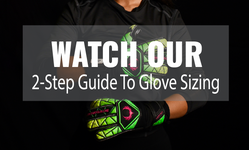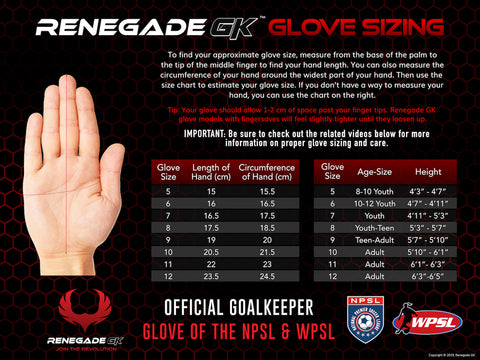Goalkeepers aren't only in charge of their net; they have to pay close attention to their penalty area, too. The penalty box is the only spot on the field where a single player has an advantage over every single other player- a keeper can use their hands. But, like with all other things, with great power comes great responsibility and this advantageous position is no different. Goalies must assume the mentality of an army general and control the penalty area.

Defenders count on goalkeepers to be the boss of the penalty area and when the team can have this sort of confidence in their keeper; it's a morale booster for the entire team.
There are four priorities that a goalkeeper must think about to command the penalty area:
1) Position
2) Judgment
3) Technique
4) Communication With Your Defenders
It's essential for a keeper to maintain proper position at all times. Wherever the ball is, a goalkeeper must stay aware of where their defenders are and where the opposing attackers are. When a member of the opposing team has the ball, the keeper should never take their eyes off of them. You don't want to give these players an opportunity to take a shot (which can happen at any moment) and catch you off guard.
A goalie's number one responsibility is always to know where they're standing in proportion to the net to be able to protect it effectively.
When an opposing attacker is approaching the goal, a goalkeeper must communicate with their defender and instruct them which way to push the attacker. If the attacker is forced to the far post, the keeper should position themselves accordingly to make a save at the far post, rather than having to guess where to jump. Positioning makes it much easier to make a save- but it takes a lot of practice, and the keeper must master team communication skills.
Keepers must be agile and aware of everything around them to judge the right moment to move the ball and claim it. Many goalkeepers are unsure of where to position themselves for corner kicks. It's important that a keeper knows that they need to position themselves differently for an in-swinging corner kick that's curling towards the net than they do for an out-swinging corner kick that's curling away from the net When the kick is in-swinging, the goalie should stand closer to the goal line so that they can protect the net better. When the corner is out-swinging, the goalkeeper is permitted to stand further away from the goal line. This allows the keeper to put themselves into position ahead of the time to make a play on the ball.
So what should a keeper do about catching the ball in corner kicks? It's important to catch the ball a the highest point of your jump- when you're at the highest point, and you extend your arms, you're most likely to reach a ball-- more than any other player would be able to do with their head When you catch the ball with your powerful gloves, put your thumbs behind the ball to assure it doesn't slip through. Also, don't forget- clearing the ball out of your area with a punch is an excellent way to defend the penalty area.
All in all, the calmer a keeper remains, the more effectively they can defend a penalty kick. Here are three tips to help you effectively guard your penalty area:
1) Read your opponent's body language
There are three things a goalkeeper should watch for when a shooter is preparing for a penalty kick: the direction the shooter approaches the ball, their plant foot, and their hips.
Shooters shoot opposite of the direction that they approach the ball. The plant foot is a great indicator of the direction of the shot. Finally, the hips don't lie. If a shooter opens their hips in a certain direction, it's likely the destination of the shot.
2) Hone In On Their Eyes
As the shooter prepares to take their shot, watch their eyes. They'll make a quick glance in the direction they'll be aiming for. But be aware of mind games- if a player is only looking in one direction and being obvious, they're fleecing you.
3) When In Doubt, Dive Low
Shots in the upper corners have the highest percentage of scoring, but it also requires the greatest amount of skill on the penalty shooter's behalf. The risk of missing the goal completely is much higher when a shooter goes for those top corners. Most shooters will opt to shoot the ball low and toward either the right or left post. If a keeper lacks confidence on reading a shooter's intent, diving towards a low corner is a higher percentage play than diving to a high corner.
Using these tips the next time you're facing a penalty kick to increase your chances of becoming a PK hero!









